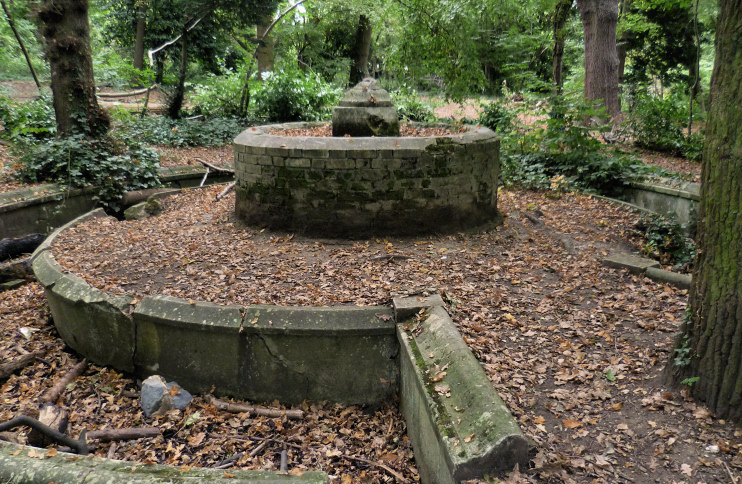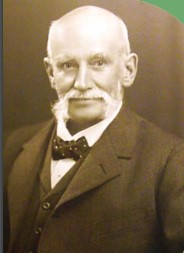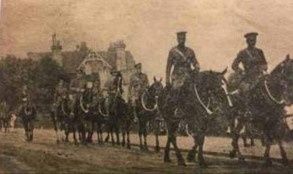- Home
- Local History
- South Hill Woods, Bromley
South Hill Woods (Bromley)
Written by PAM PREEDY, historian & author.
A wealth of flora and fauna
At the end of Westmoreland Road is a wooded park frequented by bowlers, tennis players, dog walkers and those just out for fresh air, South Hill Woods. Today it has regenerated into a wild woodland habitat, with a wealth of flora and fauna, including woodpeckers, nuthatches, two species of bat, and a variety of insects, bees, centipedes, and battles inhabiting the rich variety of trees, such as oak, ash, hazel and beech.
The history of the area goes back a very long way. these are the remnants of ancient woodlands, Toots Wood, which used to stretch beyond South Hill Woods and included Kingswood Glen, where an Iron Age hill-fort stood. Traces of a Roman camp were also found in the grounds of a large house, Romanhurst, also long gone, located between the Glen and the park.


In 1887, Sir Thomas Dewey purchased the area of South Hill Woods for £1,581.5s, and built a large family home with gardens of exotic and ornamental gardens, specimen trees, stables, a conservatory and a music pavilion. (No. 1, South Hill Woods Road is now split into flats). Dewey was President of the Prudential Assurance Company and worked with them for 50 years. He moved to Bromley in 1860 and lived first in Tweed Cottage and later in South Hill Woods.
He became very influential in Bromley and was associated with St Mark’s Church. He was the Charter Mayor of Bromley in 1903-1904 and honourary Colonel of the 2nd Kent Royal Garrison Artillery (Volunteers), later the 4th London Brigade, Royal Field Artillery from 1905 until 1921, and largely paid for its drill hall at Ennersdale Road, Lewisham.
He became patron of the Kent County Football Association in 1912.
The Cavalcade arrived
There is a delightful description of a visit to his home at South Hill Woods by the 4th Brigade in 1914. The report gives some impression of what the garden might have looked like in 1914. The visit began when the brigade of about 275 men on horseback, their guns, wagons and ammunition column, paraded through the centre of Bromley from Lewisham past Bromley South station, up Westmoreland Road to their Colonel’s home

“When the cavalcade arrived at South Hill Woods, they parked their guns in the large meadow where refreshments awaited the men and their horses after their journey in the hot sun of Saturday”
The cavalcade gathered in a clearing for parade where Colonol Dewey took the salute accompanied by a large party of family and friends. Afterwards, when the horses had been seen to, the non-commissioned officers and men sat down to a substantial meal, in a commodious and cool marquee, with an ample supply of tobacco at their disposal. Finally, there were speeches and then Colonel Dewey and his party gathered to watch the competitions between the three batteries.
“A really good exhibition of skilled team driving in Ammunition Column (Lieutenant Beck) being first: 11th Battery (Major Bowater) second: and 10th Battery (Major Finch) third. The way in which the competitors wheeled and drove through the ‘posts and stumps’ (or as some artillerymen term them, ‘gates and pegs’), with only three inches clearance on either side, was great. Only one stump was broken down in the competition.”
While the men prepared to depart, Colonel Dewey and the officers dined, and the Brigade band played under Bandmaster W.H. Larkin. Today I look vain for the meadow.
Auxiliary Hospital opened
During World War 1, Colonel Dewey opened his music pavilion as an auxiliary hospital – it had 12 beds in two wards. The first patients were wounded Belgian servicemen, followed by the British; the hospital presumably closed in 1918. During the war years, Canadian troops would gather along the wall on Tooswood Road. Many would carve their names and doodles on the bricks. When the wall had to be rebuilt, one small area was kept as a memento.
The music pavilion was completely destroyed by a V1 rocket during WW2. It was rebuilt in 1954 as a bowls pavilion incorporating the 1902 neo-Georgian facade and gable when the gardens became a public park. Sadly, the foundations of the pavilion were too shallow which resulted in subsidence and it had to be demolished in 2006. Since then, the bowls pavilion has been rebuilt and there is a busy bowls club. There are also tennis courts where lessons are held.

Further your research
You can find further information on the boards in the park, or online here >
Thomas Dewey – Wikipedia Entry
Originally published in Life in Bromley magazine (Issue 13, March 2023)
